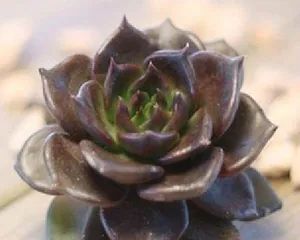Succulents, as popular potted plants worldwide, not only beautify the environment but also purify the air. However, many people encounter various problems when growing succulents, such as improper selection of materials and incorrect watering. This article will detail the methods and techniques for growing succulents from aspects like material selection, planting, and maintenance.

I: Choose Suitable Succulent Varieties
When selecting succulent varieties, you need to consider your own cultivation conditions and habits. For example, if you don't have a balcony at home or have limited sunlight, you can choose more shade-tolerant varieties such as cacti and succulent roses.
II: Pay Attention to Details When Selecting Materials
When purchasing succulent plants, pay attention to the plant's appearance and health condition. If the plant surface is yellowing or has many spots, it indicates that it may have been affected by diseases or over-fertilized, so it is not recommended to buy.

III: Prepare Suitable Soil for Succulent Growth
Since succulent plants have relatively developed root systems, they require loose and well-draining soil. Using ordinary flower soil to grow succulents will result in overly compacted soil, affecting plant growth.
IV: Water Scientifically and Reasonably
Succulent plants prefer dry environments, so it's important to avoid overwatering. Generally, each watering should be controlled within an appropriate range to prevent excessive moisture from causing root rot.
V: Master Proper Fertilization Timing
Succulent plants grow slowly, so frequent fertilization is not necessary. Generally, fertilize once every two months or so. It is recommended to use fertilizers containing phosphorus, potassium, and other elements to provide the nutrients needed by the plants.

VI: Maintain Appropriate Temperature and Humidity
Succulent plants require different temperatures and humidity levels in different seasons and environments. Generally, indoor temperatures above 10°C and relative humidity around 50% are appropriate. During hot summer weather, it is important to ventilate and cool down promptly.
VII: Master Correct Pruning Methods
Pruning succulent plants can promote branching and growth, but correct methods must be mastered. Generally, scissors can be used to trim the top or side branches of the plant to promote branching and growth.
VIII: Prevent Pests and Diseases
Succulent plants are susceptible to pests such as aphids, red spiders, and whiteflies, as well as diseases like root rot, leaf spot, and black spot. It is recommended to regularly inspect and clean succulent plants to prevent pest and disease occurrence.
IX: Choose Appropriate Lighting Environment
Succulent plants prefer bright light environments, but direct exposure to strong sun should be avoided. Generally, succulent plants can be placed on balconies or near windows to obtain sufficient sunlight.
X: Arrange Succulent Plants Reasonably
The placement position of succulent plants also affects their growth. It is recommended to place succulent plants in well-ventilated and well-lit positions, avoiding prolonged exposure to high temperatures or humid environments.
XI: Pay Attention to Succulent Dormancy Periods
Some succulent plants need to go through a dormancy period to ensure normal growth and development. Generally, succulent plants can be placed in cool indoor areas during autumn to avoid direct sun and high temperatures.
XII: Replace Soil Timely
Due to the developed root systems of succulent plants, they easily deplete nutrients in the soil. Therefore, it is necessary to replace the soil regularly to ensure normal plant growth.
XIII: Observe Succulent Leaf Color
The leaf color of succulent plants can reflect their environmental conditions and care status. If leaves turn yellow or fade, it may be due to improper care or nutrient deficiency.
XIV: Master Succulent Propagation Methods
Succulent propagation methods include stem cutting, leaf propagation, and seed propagation. You need to choose the appropriate propagation method based on your specific situation to increase the number of succulent plants.
XV:
Succulent plants are beautiful and practical potted plants, but they require attention to many details in care. In terms of material selection, watering, fertilization, pruning, etc., scientific and reasonable care should be provided according to the specific conditions of the plants to ensure their normal growth and development.